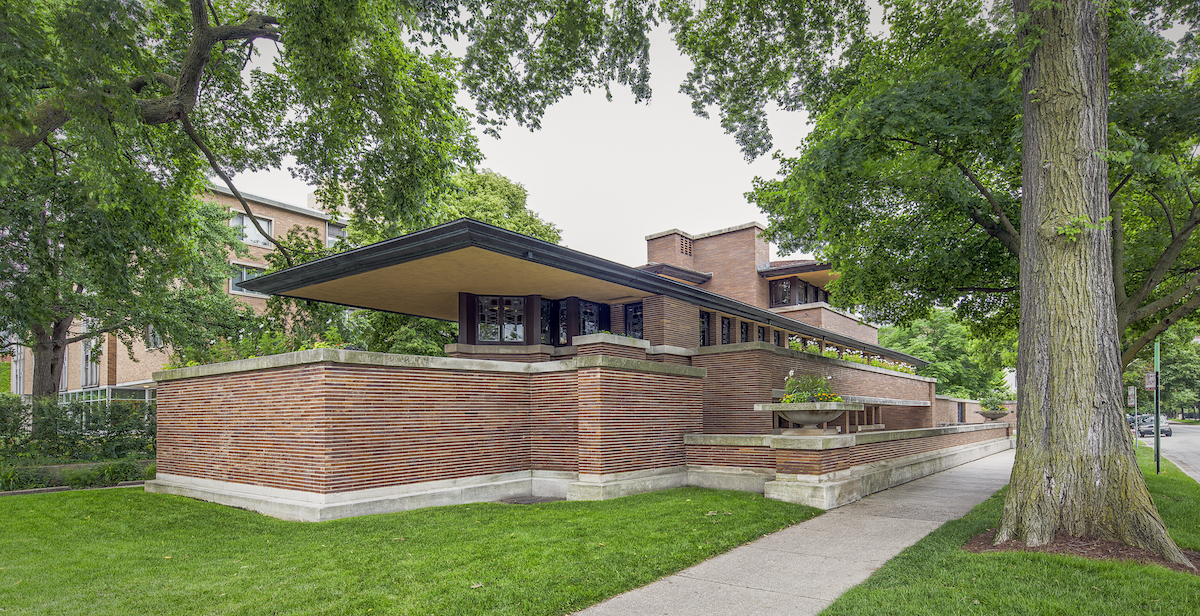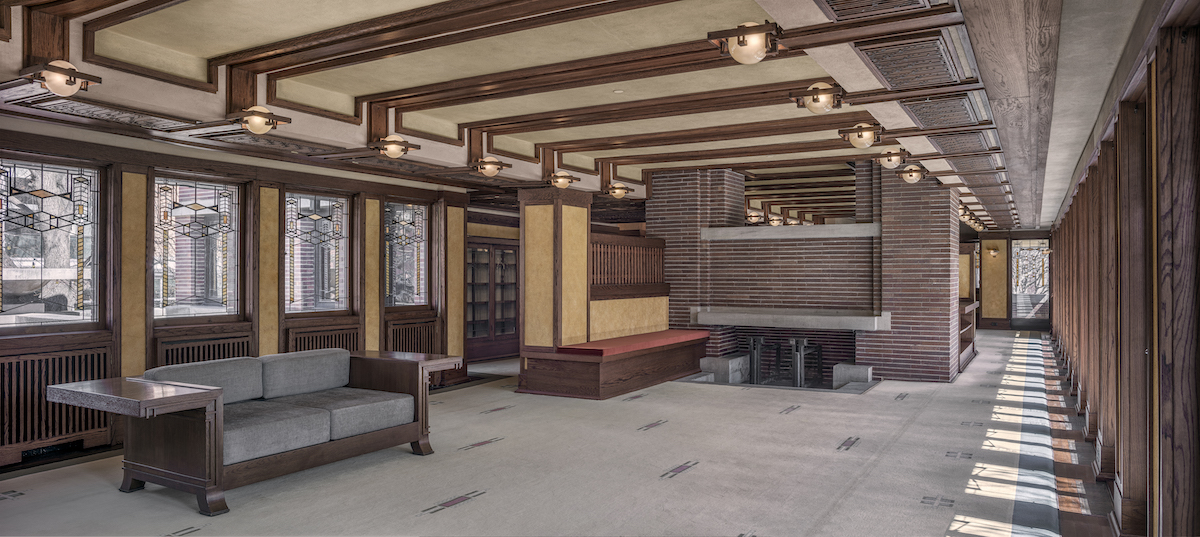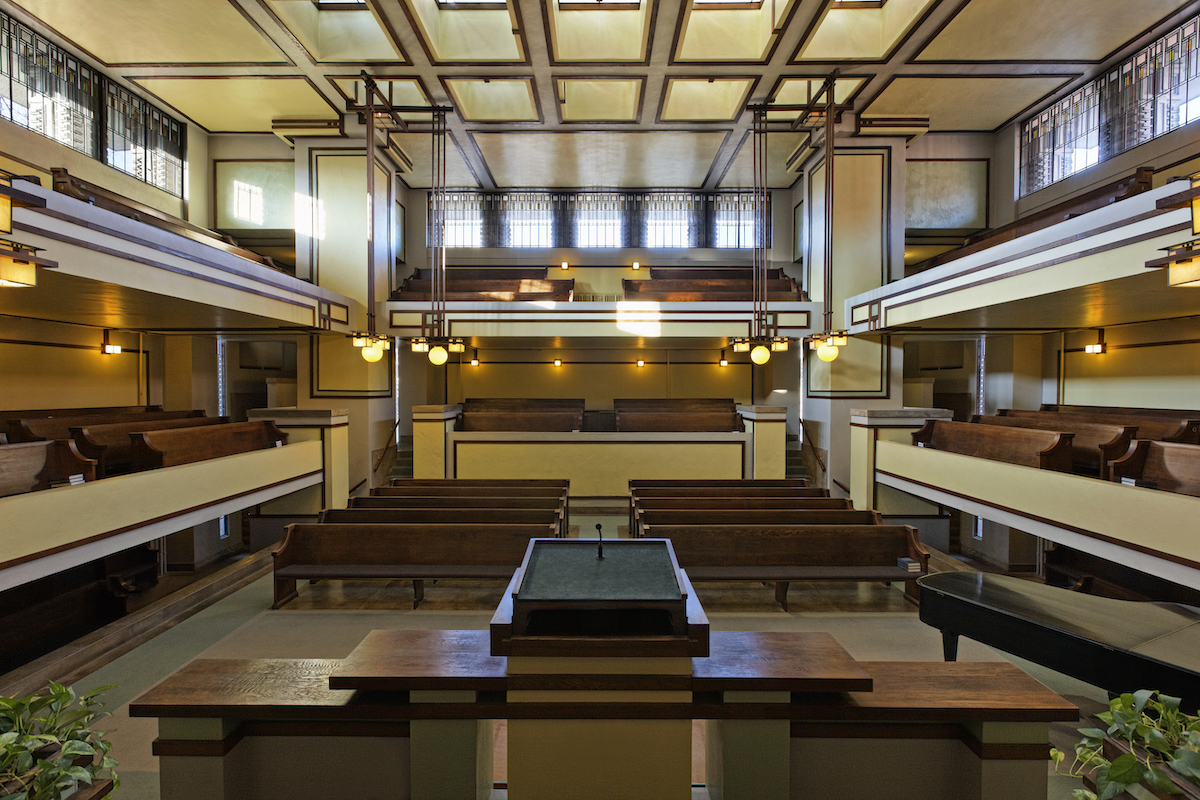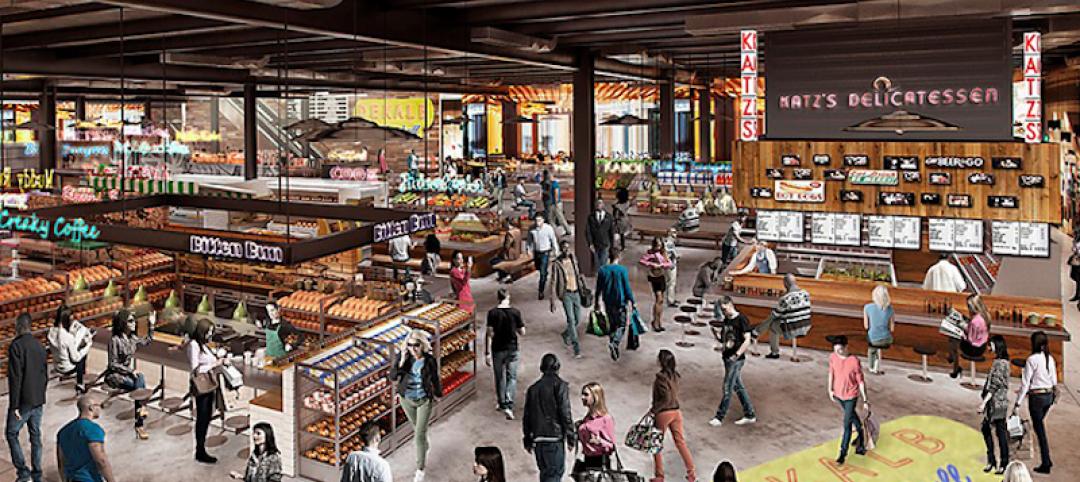During the 43rd session of the World Heritage Committee, currently taking place in Baku, Republic of Azerbaijan (June 30 - July 10, 2019), the World Heritage Committee named eight projects by Frank Lloyd Wright to the UNESCO World Heritage List.
The designation, officially named “The 20th century Architecture of Frank Lloyd Wright,” includes signature works designed by the architect during the first half of the 20th century. They are:
• Aline Barnsdall Hollyhock House (Los Angeles)
• Fallingwater (Mill Run, Pa.)
• Frederick C. Robie House (Chicago)
• Herbert and Katherine Jacobs House (Madison, Wis.)
• Solomon R. Guggenheim Museum (New York)
• Taliesin (Spring Green, Wis.)
• Taliesin West (Scottsdale, Ariz.)
• Unity Temple (Oak Park, Ill.)
On making the selection, the World Heritage Committee stated: “These buildings reflect the ‘organic architecture’ developed by Wright, which includes an open plan, a blurring of the boundaries between exterior and interior, and the unprecedented use of materials such as steel and concrete. Each of these buildings offers innovative solutions to the needs for housing, worship, work or leisure. Wright's work from this period had a strong impact on the development of modern architecture in Europe.”
In Chicago, the UNESCO designation coincides with the Frank Lloyd Wright Trust’s announcement of a new Frank Lloyd Wright Visitor and Education Center. The trust owns and maintains Wright’s Home and Studio in Oak Park, Ill., and operates public tours and programs at five Chicago area historic sites, including Unity Temple (1905-08) and Robie House (1908-10).
“This UNESCO designation firmly establishes Wright’s place on the international stage of modern architecture,” said Celeste Adams, President & CEO of the Frank Lloyd Wright Trust.
Wright joins pioneers of modern architecture already inscribed on the prestigious list, including Gerrit Rietveld, Walter Gropius, Mies van der Rohe, Le Corbusier, Oscar Niemeyer and Lucio Costa. There are more than 1,000 World Heritage sites around the world, and the group of Wright sites is now among 24 sites in the U.S.
 Frederick C. Robie House, Chicago. Photo: Tim Long, courtesy Frank Lloyd Wright Trust
Frederick C. Robie House, Chicago. Photo: Tim Long, courtesy Frank Lloyd Wright Trust
 Frederick C. Robie House, Chicago. Photo: James Caulfield, courtesy Frank Lloyd Wright Trust
Frederick C. Robie House, Chicago. Photo: James Caulfield, courtesy Frank Lloyd Wright Trust
Related Stories
Architects | Sep 26, 2016
Explore the world through architectural adventures
A new travel program offers design enthusiast travelers 10 global destinations.
Architects | Sep 21, 2016
DLR Group broadens its practice range and market penetration with addition of Westlake Reed Leskosky
The merger, say company officials, creates “a global design leader” in a consolidating industry.
Architects | Sep 21, 2016
Design for the transition from thinking to creating
While heads-down work continues, the changing nature of learning and work has resulted in a shift toward frequent and spontaneous exchanges.
Codes and Standards | Sep 21, 2016
Healthy buildings becoming a key design priority for both architects and building owners
Nationwide survey finds nearly three of four architects cite health impacts influencing design decisions
Cultural Facilities | Sep 19, 2016
International competition recognizes insect-inspired design for Moscow Circus School
The proposal would make the school’s activities more transparent to the public.
Architects | Sep 19, 2016
A workplace designed for the innovation economy
Over the past 100 years, how we work has changed dramatically, and these changes have impacted workplace design.
Architects | Sep 16, 2016
Former architect now builds architectural wonders out of LEGO blocks
Adam Reed Tucker’s creations are currently on display at the Museum of Science and Industry.
Architects | Sep 15, 2016
Implicit bias: How the unconscious mind drives business decisions
Companies are tapping into the latest research in psychology and sociology to advance their diversity and inclusion efforts when it comes to hiring, promoting, compensation, and high-performance teaming, writes BD+C's David Barista.
Museums | Sep 14, 2016
Architectural model museum opens in Japan
The museum includes models from Japanese architects including Shingeru Ban, Kengo Kuma, and Riken Yamamoto.
Designers | Sep 13, 2016
5 trends propelling a new era of food halls
Food halls have not only become an economical solution for restauranteurs and chefs experiencing skyrocketing retail prices and rents in large cities, but they also tap into our increased interest in gourmet locally sourced food, writes Gensler's Toshi Kasai.

















